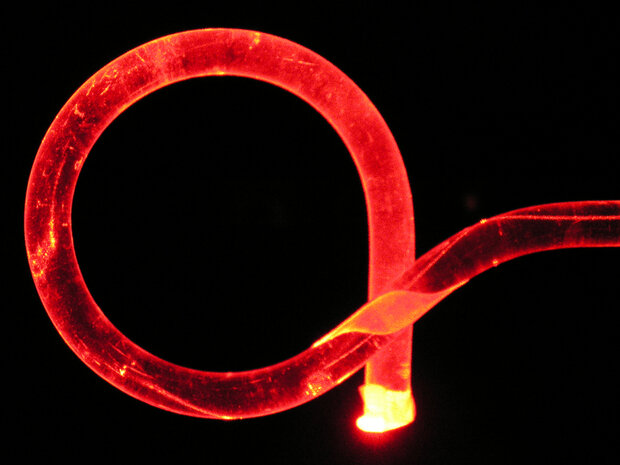
EN 207, CE Marking and Laser Protective Eyewear
Laser Safety falls under the ANSI 136.1 standard in the United States and the EN207/EN208/EC60825 standard in Europe.
All products sold in the European Union must be CE marked where a relevant European Directive exists. To sell non-CE marked products is illegal. Similarly, within the UK all products must be UKCA marked. For laser safety eyewear this means showing conformity to the laser protection requirements of the Personal Protective Equipment (PPE) Directive. Whilst in theory manufacturers can use their own standard to show conformity with the directive, as long as they can show that their standard is sufficiently rigorous, in practice the eyewear is always tested and certified to EN 207 (or EN 208 for alignment eyewear). Such testing must be carried out by a government approved test house – self certification is not allowed for these standards. Consequently since 1997, when the EN 207 became a harmonised European Standard, all laser protective eyewear sold legally in Europe or the UK (where these standards have been adopted as British Standards BS-EN207 and BS-EN208) has been certified to EN 207 or EN 208.
Despite being around for since 1997 EN 207 is still often not well understood. Consequently we are writing a brief explanation here to help users of laser safety eyewear.
Optical Density Specification
Prior to EN 207 laser protective goggles were usually specified by their Optical Density (OD) and this is still a widely used method especially in the USA (where Optical Density is often the only protective information available for the eyewear). The OD of eyewear is the log of the attenuation factor at a given wavelength. Thus eyewear which attenuates Fiber laser radiation by a factor of 1,000,000 has an OD of 6 at 1064 nm. The method for specifying eyewear using optical density involves working out the maximum accessible emission from the laser and dividing it by the Maximum Permissible Exposure (MPE)3 for the laser radiation. The log of this number is the minimum required OD for the eyewear.
Limitations of Optical Density Specification
The problems with this approach are graphically illustrated if we consider a high power CO2 laser emitting at 10600 nm, and some polycarbonate eyewear having an OD > 6 at the same wavelength. The Class 1 Accessible Emission Limit for this wavelength is 10 mW and this power is therefore safe under all exposure conditions. We might therefore expect that the eyewear will protect us against 1,000,000 x 10 mW = 10 kW from the CO2 laser. However, if we place the eyewear in a CO2 laser beam of even a few hundred watts we find that it is very quickly destroyed and offers little protection (even a 20 W beam will cause immediate burning of the eyewear).
Damage Threshold
So we see that Optical Density alone does not take account of the damage threshold of the material which is used to protect us from the laser radiation – ie the power or energy density (W/m2 or J/m2) which the eyewear will withstand. EN 207 was written to address this problem and takes account of both the Optical Density and the damage threshold of the eyewear.
EN 207 Markings Explained
After testing to EN 207 the laser protective eyewear is awarded various markings which are printed on the eyewear and specify the maximum power and energy densities which the eyewear can protect against at different wavelengths.
In 2010 the EN207 standard was updated and the L rating was renamed LB. The calculations to determine the required ratings were changed slightly so older eyewear will have L markings and more recent eywear will have LB markings, but the protection provided by L and LB ratings is virtually the same. For instance eyewear may be marked as follows:
- DI 750 – 1200 LB5
- R 750 – 1200 LB6
- M 750 – 1200 LB4
This means that over the wavelength range 750 – 1200 nm the eyewear has the following ratings:
D LB5 I LB5 R LB6 M LB4
The D, I, R and M refer to CW or different pulse lengths as follows:
- D – Continuous Wave (CW)
- I – Pulsed with pulse length > 1 µs and < 250 ms ‘Long Pulse’
- R – Pulsed with pulse length > 1 ns and < 1 µs, ‘Q-switched’
- M – Pulsed with pulse length < 1 ns, ‘Femtosecond’4
The ‘LB numbers’ (LB5, LB6, LB4 etc) refer to the maximum power or energy density which the eyewear is specified for. The actual values must be looked up from Table B1 in EN 207 (which for copyright reasons we cannot reproduce here). For the eyewear markings given above, the values are:
- CW – 1 MW/m2 D LB5
- Long Pulse – 500 J/m2 I LB5
- Q Switched – 5 kJ/m2 R LB6
- Femtosecond – 1.5 J/m2 M LB4
An increase in the LB number by 1, will increase the power and energy density values by one order of magnitude. Note however, that EN 207 breaks down the LB number table into three wavelength ranges, 180 – 315 nm, 315 – 1400 nm and 1400 – 1,000,000 nm. The relationship between the LB numbers and power / energy densities shown above holds only for the 315 -1400 nm wavelength region. For other wavelengths refer to EN 207.
LB Numbers and Optical Density
As well as being able to withstand the power of the laser beam without being destroyed, the filter must also be able to attenuate the laser beam in order to protect. During the EN 207 testing, in order for a filter to be given an LB rating, the filter must have an Optical Density in excess of the LB number, at the specified wavelength. Therefore, in the example shown above, we can deduce that the eyewear has an OD > 6 across the wavelength range 750 – 1200 nm (because it has an RLB6 rating across this wavelength range). However, we do not need to worry about calculating the MPEs and accessible emission, because this has already been taken account of in the maximum power / energy densities specified for each LB number.
Specifying Eyewear Using EN 207
To specify appropriate LB numbers for your laser, do the following:
- Determine the minimum laser beam diameter to which a person might be exposed under reasonably foreseeable circumstances.
- Calculate the cross-sectional area of the beam at this point
- Calculate the average power density at this point by dividing the average power of the laser by the beam area
- Look up the required LB number from Table B1 in EN 207. Preceed this number with a D.
Additionally for pulsed lasers:
- Calculate the energy density5 by dividing the energy per pulse by the beam area.
- For lasers in the wavelength range 400 – 1400 nm, calculate a corrected energy density by multiplying the actual energy density5 by N0.25, where N is the total number of pulses in 10 seconds.
- Using the energy density5 or corrected energy density5 as appropriate, look up the required LB number from Table B1 in EN 207. Precede this with an I for long pulse, R for Q-switched and M for femtosecond or picosecond lasers.
Thus a 532 nm laser emitting 1 mJ, 7 ns pulses at 10 kHz, and having a minimum accessible beam diameter of 2 mm would require eyewear with the following minimum specification:
- D 532 LB6 (corresponding to 10 MW/m2)
- R 532 LB7 (corresponding to 50 kJ/m2)
Note that for pulsed lasers the eyewear must have both the correct I, R or M specification (depending on the pulse length) and the correct D specification, to ensure that it is suitable for the laser.

EN 207 standard for laser safety glasses, what does that mean?
EN 207: the lenses and frames must be able to provide the stated level of protection for 10 seconds or 100 pulses
The European EN 207 standard for laser safety glasses requires that the protective eyewear be labeled with the CE mark and that the L-Rating specifications are indelibly printed on the lens. In addition, the lenses and frames must be able to provide the stated level of protection for 10 seconds or 100 pulses depending on the mode of the laser. The L-Rating is composed of 3 components: a wavelength range, a laser mode designation, and a scale number. The wavelength range engraved on the laser safety glasses is given in nanometers and is extremely important since the level of protection provided by the laser safety glasses is wavelength dependent. The laser mode designation is based on the duration of the pulse emitted by the laser
Download our special on Laser welding eyes protection
Get our Laser Welding Eyes protection special
Lasermach laser welding protection glasses - laser welding protection goggles - laser welding protection face shields - laser welding protection helmets - laser welding protection for eyes
GOTO our Download page to download the manual and price list

